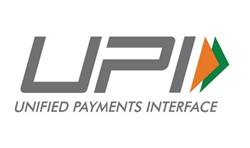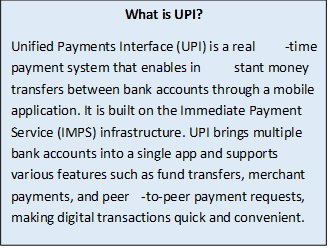UPI in Figures: A Snapshot of Success
The scale and impact of the Unified Payments Interface (UPI) in India are nothing short of extraordinary. In June 2025 alone, UPI processed over ₹24.03 lakh crore in payments through 18.39 billion transactions. This marks a 32% increase from June 2024, which saw 13.88 billion transactions—highlighting the platform’s rapid year-on-year growth.
UPI now serves:
491 million individuals
65 million merchants
675 banks on a single interoperable platform
This widespread reach has made UPI the backbone of India’s digital payment ecosystem. Today, UPI accounts for 85% of all digital transactions in the country, underscoring its dominance and reliability.
On the global stage, UPI is equally impressive—powering nearly 50% of the world’s real-time digital payments.
These figures are more than just statistics; they represent trust, convenience, and efficiency. With each passing month, more individuals and businesses adopt UPI, accelerating India’s transition toward a less-cash, digitally empowered economy.

UPI Leads the World in Real-Time Payments
India’s Unified Payments Interface (UPI) has emerged as the world’s leading real-time payment system, surpassing even global giants like Visa. UPI now processes over 640 million transactions per day, narrowly ahead of Visa’s 639 million. What makes this feat exceptional is that UPI achieved this scale in just nine years since its launch in 2016.
Today, UPI accounts for nearly 50% of global real-time digital transactions, highlighting the strength of an open, interoperable, and user-friendly system built for speed, scalability, and inclusion.
A Growing Global Footprint
UPI’s success is no longer confined to Indian borders. It is now operational in seven countries:

Among these, the launch in France marks a historic milestone—UPI’s first foray into Europe. It allows Indian tourists, students, and expatriates to make seamless digital payments abroad, bypassing traditional forex barriers and transaction delays.
Strategic Push in BRICS and Beyond
India is also advocating for UPI to be adopted as a digital payment standard within the BRICS group, now expanded to include six new member nations. If realized, this move could:
Revolutionize cross-border remittances
Enhance financial inclusion
Bolster India’s status as a global digital public infrastructure (DPI) leader
Interoperability and UPI: Powering Seamless Digital Payments
Interoperability refers to the ability of different systems to work together efficiently. In the context of digital payments, it means users can send and receive money across different banks or apps, without being restricted by the platform they use. This seamless functioning is made possible through common technical standards, shared data protocols, and clearly defined rights and responsibilities among all players in the ecosystem.
From Closed Loops to Open Networks
Before the advent of UPI, India’s digital payment landscape was dominated by closed-loop systems. These systems allowed transactions only within a single platform. For example:
A digital wallet could transfer money only between its own users.
While IMPS enabled interbank transfers, users couldn’t access it through third-party apps.
This limited both usability and scalability.

How UPI Has Changed Everyday Life in India
1. Money Anytime, Anywhere: No need to visit banks or ATMs. Enables instant money transfers 24×7 from mobile phones.
2. One App for All Accounts: Users can link multiple bank accounts in a single app. Simplifies money management without switching platforms.
3. Safe and Quick Payments: Two-factor authentication ensures secure transactions. Payments are completed within seconds.
4. Privacy First: No need to share bank account numbers or IFSC codes. A simple UPI ID ensures privacy and reduces fraud risk.
5. QR Code Convenience: Scan-and-pay option speeds up transactions at shops, vendors, and local markets. Reduces dependency on cash.
6. No More Cash-on-Delivery Hassles: Online purchases can be paid via UPI. Eliminates the need for exact change or physical cash.
7. Payments for Everything: Utility bills, mobile recharges, donations, and more can be done directly from the app. Encourages digital self-service from home.
8. Easy Grievance Redressal: Users can report failed or disputed transactions within the app. Makes customer support accessible and prompt.
The Digital Foundation Behind UPI
| Pillar |
Initiative |
Details |
Impact on UPI |
| 1. Financial Inclusion |
Pradhan Mantri Jan Dhan Yojana (PMJDY) |
– Launched in 2014 to ensure universal access to banking.
– Over 55.83 crore Jan Dhan accounts opened as of July 9, 2025.
– Enabled Direct Benefit Transfers (DBT), savings, credit, and insurance access. |
– Expanded the base of formal account holders.
– Facilitated smooth onboarding of users to UPI.
– Enabled financial access to the last mile. |
| 2. Digital Identity |
Aadhaar |
– Provides a unique 12-digit digital ID linked to biometrics and demographics.
– Over 142 crore Aadhaar numbers issued as of June 30, 2025.
– Linked with bank accounts and payment systems. |
– Serves as a secure and reliable authentication layer for UPI.
– Enabled targeted and verified delivery of services and payments. |
| 3. Connectivity |
Affordable Internet & 5G Rollout |
– Rapid 5G rollout with 4.74 lakh base stations by 2025.
– Mobile subscriber base reached 116 crore.
– Data cost reduced from ₹308/GB (2014) to ₹9.34/GB (2022). |
– Ensured seamless access to real-time services like UPI, even in rural areas.
– Enhanced digital penetration and user experience. |
Conclusion
India has emerged as the global leader in fast payments, and UPI is at the heart of this achievement. It has not only made digital transactions quick and secure but has also set a new global standard for innovation in public digital infrastructure. What started as a simple system to link bank accounts to mobile apps has become the backbone of a digital-first economy. Its growth is built on strong foundations of financial inclusion, digital identity and affordable connectivity. UPI’s expansion into other countries highlights its global potential. As more nations adopt this model, India’s vision of a secure, real-time, and open payment system is influencing the future of digital finance.
Source: PIB
Prelims Questions



 What is UPI?
What is UPI? 




No Comments